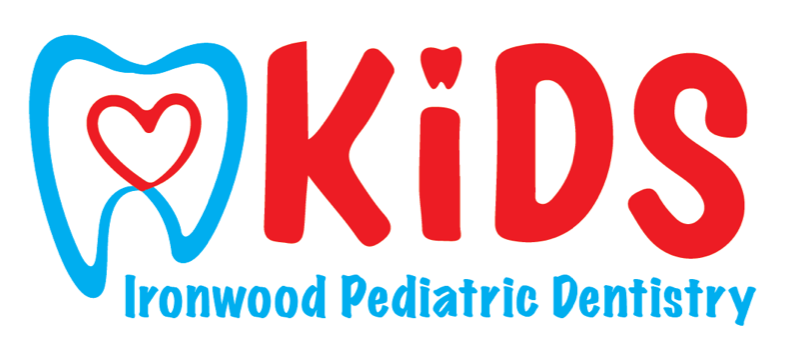Bite blocks are tools that, together with braces treatment, can help correct teeth alignment so your child can bite properly. In this article, we discuss what bite blocks are, how orthodontists use them to ensure that teeth are aligned properly, and common concerns that can arise when applied.
If your child needs braces, an orthodontist at Ironwood Pediatric Dentistry can tell you if bite blocks will be necessary. To learn more about bite blocks or about child orthodontics generally, call us at (480) 422-4544 to speak with a Scottsdale child orthodontist.
What are Bite Blocks?
Bite blocks, also known as bite turbos or ramps, are an orthodontic appliance that works with braces treatment to help fix a misaligned bite.
Bite blocks are custom-made additional devices that prevent your child’s upper teeth and lower teeth from biting down completely and making contact with each other. These devices attach to the lingual, or tongue-side, of the front teeth or the chewing surfaces of the back molars.
Bite blocks are tiny devices made from any of a variety of materials. These include metal brackets, acrylic plastic, or glass ionomer cement. They also come in variable configurations: triangular, L-shaped for front teeth, flat or mounded blocks for back teeth, and even spring-loaded devices.
Bite blocks are available in several colors, from natural to match the color of your child’s teeth as well as bright hues like red, pink, blue, and silver.

How Are Bite Blocks Used?
Bite blocks prevent damage to the braces brackets on the front teeth when biting. They are also helpful in avoiding tooth wear or damage on front or back teeth when chewing.
Orthodontists usually use bite blocks in combination with braces treatment, but sometimes they can be applied independently of braces.
How Long Are Bite Blocks Needed?
Although your child might need to wear braces for a year or longer, bite blocks are usually needed for less time. Six to nine months of treatment time is frequently all it takes for them to have their desired effect.
What Should My Child Expect When Wearing Bite Blocks?
Bite blocks are useful in enhancing the ability of braces to correct bad bites, but they can take some getting used to. Here are some common issues our child patients can encounter when bite blocks are used, which usually happen during the first week, and how you can help your child adapt to them.
Chewing Problems and Jaw Discomfort
Bite blocks work by physically changing how your child’s jaws work while biting down. This can make chewing food a little more challenging at first. Bite blocks can also temporarily affect the muscles in the jaws, making them work in ways they are not used to and possibly causing some minor pain.
To help your child’s transition to using bite blocks easier, it is better to eat soft foods than ones that require harder chewing like hard, sticky, or chewy foods. It is also a good idea to encourage cutting braces-friendly foods into smaller pieces to make each bite easier to chew. This combination will make it easier to chew food thoroughly and lessen discomfort to the jaw muscles.
Over-the-counter medications like aspirin, acetaminophen, or ibuprofen are often all that is needed to treat minor jaw pain. If more pain relief is necessary, an anesthetic gel treatment can also be helpful.
After a few days, perhaps a week, your child’s jaws will become accustomed to the presence of the bite blocks, and chewing problems and pain should subside. If problems like soreness persist after a few weeks, you should contact your child’s orthodontist to follow up.
Speech Impairments
Bite blocks can also effect your tongue, including when speaking. This is a common issue when bite blocks are applied to the inside surfaces of the upper front teeth.
While the tongue gets used to the bite blocks, your child may experience a little difficulty pronouncing some vowels or develop a slight lisp.
Like with chewing, these speech issues ordinarily subside as the tongue gets acquainted with the bite blocks and naturally adapts in its movements. Practicing helps, starting with making single sounds and then in conversations. Talking with your child at home can be a good way to speed up this process in an environment that causes less feelings of awkwardness.
If speech impairments do not improve after a few weeks, see your child’s orthodontist. Sometimes, we can recommend specific techniques to help or, in some cases, possibly refer you to a speech pathologist.
Lost or Worn Bite Blocks
Even though they are temporary devices, bite blocks can still wear down while in use or in some cases become detached from the tooth. If this happens, call your orthodontist to schedule an appointment for a replacement bite block.
Biting on Only One Bite Block
Especially when first applied, bite blocks may only make contact with only one block. This is not normally a problem, but if it causes discomfort for longer than a few days, you can call your orthodontist for suggestions on whether any adjustment might be needed.
Are Bite Blocks Right for Your Child?
Often, braces alone are all that is needed to correct most malalignment and malocclusion problems in children so they can have healthy smiles. Your pediatric orthodontist will know whether adding bite blocks to braces treatment is something to recommend.
If you want more information about bite blocks, please call Ironwood Pediatric Dentistry at (480) 422-4544 or use our contact form. One of our child orthodontic treatment specialists will be happy to answer your questions or to set up a free consultation.
